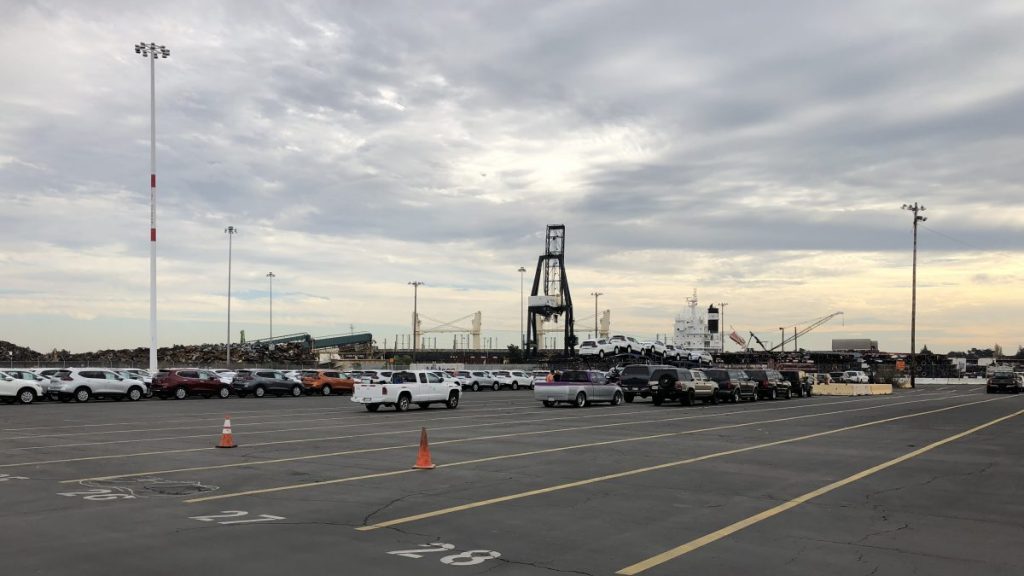Here we are, talking about Lamborghinis and Volgas, while others are wondering how to ship a tank.
And by “others” we mean mostly the government, of course. Well not only. Nowadays private people also have tanks, but that is a topic for another publication. Shipping military equipment might seem like a mystery to many. Not without a reason, there are certain requirements and process specifics to getting these giants overseas.
Shipping a tank
Since this is a topic of national security, the process of shipping a tank is a very important topic. This is why The Pentagon has mastered the logistics procedures of military equipment to perfection. It is one of their greatest strengths. They can literally ship any vehicle to the required destination within a few hours.
The Defense Department’s logistics headquarters controls the majority of shipments to and from American facilities, and war zones. Yet, the transportation of tanks is a little different from the transportation of the household possessions of an officer or their vehicle. And this is where we will include a footnote about our service to military personnel – Corsia military car shipping services includes discounts for the American military shipping their personal vehicles when moving. Now back on topic.
The shipment of a tank is like a strategic game, where you need to plan who your players are and how you line them up.
Do you use the Air Force, and its huge cargo planes, or the US Navy’s fleet of dry cargo / ammunition ships? Most times the shipping of a tank requires a combination of land, air, and water transport.
Tank transporters

You are very unlikely to see a tank rolling down the street. Instead, a tank transporter is used to carry it from one location to another. A tank transporter is a combination of a heavy tractor unit and mating semi-trailer.
The use of tank transporters limits the wear on tracks and drive trains of tracked vehicles. They also conserve fuel and are less damaging to road surfaces. The tank gets on board of the transporter with the help of ramps. Sometimes tilt beds could be used as well.
The tank transporters that are most known to the public are the M-1, and the Scammell Pioneer, which were both used in World War II. The use of tank transporters today saves both time and money. All roads are safe and no tanks are damaged.
After the tank transporters come the aircrafts and the navy ships. Aircrafts like the Lockheed C5 Galaxy have been used for decades to transport military tanks to war destinations within hours. The US Navy’s Military Sealift Command (MSC) controls and navigates the military ships of the Navy. They operate cargo ships like the MV Cape Vincent and Cape Victory which have a total deck capacity consisting of over 280,000 square feet. These are both Cape V-class ships, roll-on/roll-off ships.
RO/RO ships

RO/RO ships are designed to carry wheeled and tracked vehicles. The crew drives or tows the vehicles on and off the ship by means of either the ship’s own ramps or shore-based ramps.
The design of these ships specifically accommodates cargo, which cannot be stacked but which vary in height, below-deck space and volume utilization is generally less efficient than on a container ship. Consequently, RO/RO ships are commercially viable only in certain specialized trades.
The military advantages of RO/RO ships include:
- the capability for rapid loading and discharge of military vehicles, like tanks and non-self-deployable aircrafts
- open deck areas which are well-suited to the carriage of outsized military cargo
Their military disadvantages are:
- relative unsuitability for carriage of sustaining supplies and ammunition (in comparison with general cargo and container ships)
- limited availability, because their market sector is much reduced compared with container ships.
The military prefers using these ships exactly for their advantages. The rapid loading of tanks is possible thanks to the ramps: both external and internal. To maintain safe operations, the ramp angle for loading/unloading procedures is no greater than 15 degrees. Well, of course, you might think this is a slow procedure.
Apparently, others thought so too and developed a new machine which serves both as a tank and… as its own ship? The Marine Corps is considering new technology we are still about to see. It will not replace either tanks or ships, for now. Instead, it might serve as a ship-to-shore connector. The RO/RO ships will remain the way to ship tanks to Europe and Asia at least for some time. The US Department of Transportation’s Maritime Administration (MARAD) currently has over 30 ships in its Ready Reserve Force.
Flatbed Shipping
The actual shipping process, however, would not be possible without private companies that conduct the shipment – the contractors. These companies offer flatbed services. Flatbed shipping is a kind of truck service which allows for the transportation of heavy-duty equipment. It is used to transport tanks from the initial location to the location of the RO/RO ship, where the tank should board.
Flatbed trailers do not provide physical enclosure. This is why the Military prefers it for the shipping of tanks – it allows for the transportation of tanks and other oversized machinery. All tanks are safely secured for maximum stability. Yet, in order to do this, the shipping company should be very careful in taking the proper safety measures.
Besides military machinery, companies and individuals use flatbed shipping to transport tractor and farm equipment and construction materials.
Finding the right company
Finding the right company for heavy-duty shipping is not an easy task. Which is what makes it of crucial importance. Many transport companies lack the expertise in shipping large vehicles and as a result, shy away from the challenge.
There are certain conditions that will define the specifics of the shipment.
- The type of a tank or equipment, which ultimately defines its size and weight
- The condition of the tank – operable or inoperable
- Presence of any attachments to the tank or other internal equipment
- The distance the tank will have to travel
- The exact pick-up and delivery locations
- Strictness of moving schedule to be followed
… and the SDDC
Another key player in the shipping process is the Military Surface Deployment and Distribution Command. Not such a well-known unit, but quite an important one. The command provides ocean terminal, commercial ocean liner service and traffic management services to deploy, sustain, and redeploy U.S. forces on a global basis. The command is responsible for surface transportation and is the connection between DOD shippers and the commercial transportation carrier industry. There are about 3,000 people in the command and it is their responsibility to make sure all shippers in the chain link up properly.
Who needs shipping them tanks, anyway?
Well, for the same reasons transporter trucks carry NASCAR cars instead of letting the drivers drive them on the highway. Duh. Didn’t you see the analogy?
Tanks are expensive machines. One can cost about several million dollars. Moreover, they are quite expensive to maintain and repair. They get horrible gas mileage and their design is certainly not suitable for long-distance driving. Most importantly, they are not safe for driving on a civilian highway. Yes, the tank itself is rather safe, but its presence on the highway is not safe for the other vehicles on the road. It can be more dangerous than a long-haul truck, as a matter of fact.
A tank weighs roughly 70 tons. This makes it too heavy for most roads. Let’s not even mention bridges. In the rare case they drive on roads, it is very likely that a tank would scratch the road. Trackpads have a layer of rubber on them, but the rubber on trackpads wears out quickly and then the steel of the tank would tear up the road. It could take a tank, a highway and a couple of minutes to ruin a million-dollar investment in infrastructure.
The biggest test in US Military logistics
The first Gulf war, Operation Desert Shield/Desert Storm. Millions of tons of cargo and thousands of troops moved to support the operation. This marked the largest test of the military’s logistical capability since the World War II Normandy invasion.
The operation required the movement of 85% of all unit equipment to Saudi Arabia. They operated out of 33 ports worldwide and loaded more than 945,000 pieces of equipment. This equaled 6.5 million measurement tons (7.4 million m³). All loaded onto 564 ships bound for Saudi Araba. At the peak of the operation, the Military Traffic Management Command (MTMC) activated 12 transportation units and over 250 volunteers to support the mission. They booked a total of 37,000 forty-foot commercial containers on board of commercial liners set to the end destination.
What makes tanks so special?
The world of tanks is much more interesting than you could possibly think. Definitely more interesting than what I thought. Not surprisingly, there is even a computer game on the topic. “World of Tanks” is an online game where you can recreate historical battles and play with the same equipment used in the corresponding battle. So, if you are not into reading books or browsing through encyclopedias, this is the place for you. But if you prefer some real facts, check out these interesting details about the early days of tanks:
The first tanks were used in World War I.
This was a Top Secret project. Even the people who constructed the vehicles didn’t know what they would be used for. The research took place in both Great Britain and France, with Germany only belatedly following the Allies’ lead. The tanks were called “Landships” and they were first used in the Battle of Flers-Courcelette in 1916.
Fun fact
The name “tanks” came after the British decided to disguise the machines as water storage tanks. This is exactly what the military told the factory workers. That they were constructing water tanks… And so the code name “tanks” stayed forever. It surely confused the enemy for some time. Not today though.
Contrary to modern trends of gender equality and female empowerment, tanks in WWI had specific gender roles. During WWI, British tanks were initially categorized as “males” and “females.” Male tanks had cannons, while females had heavy machine guns. Now this is a cool fact to keep in mind!



